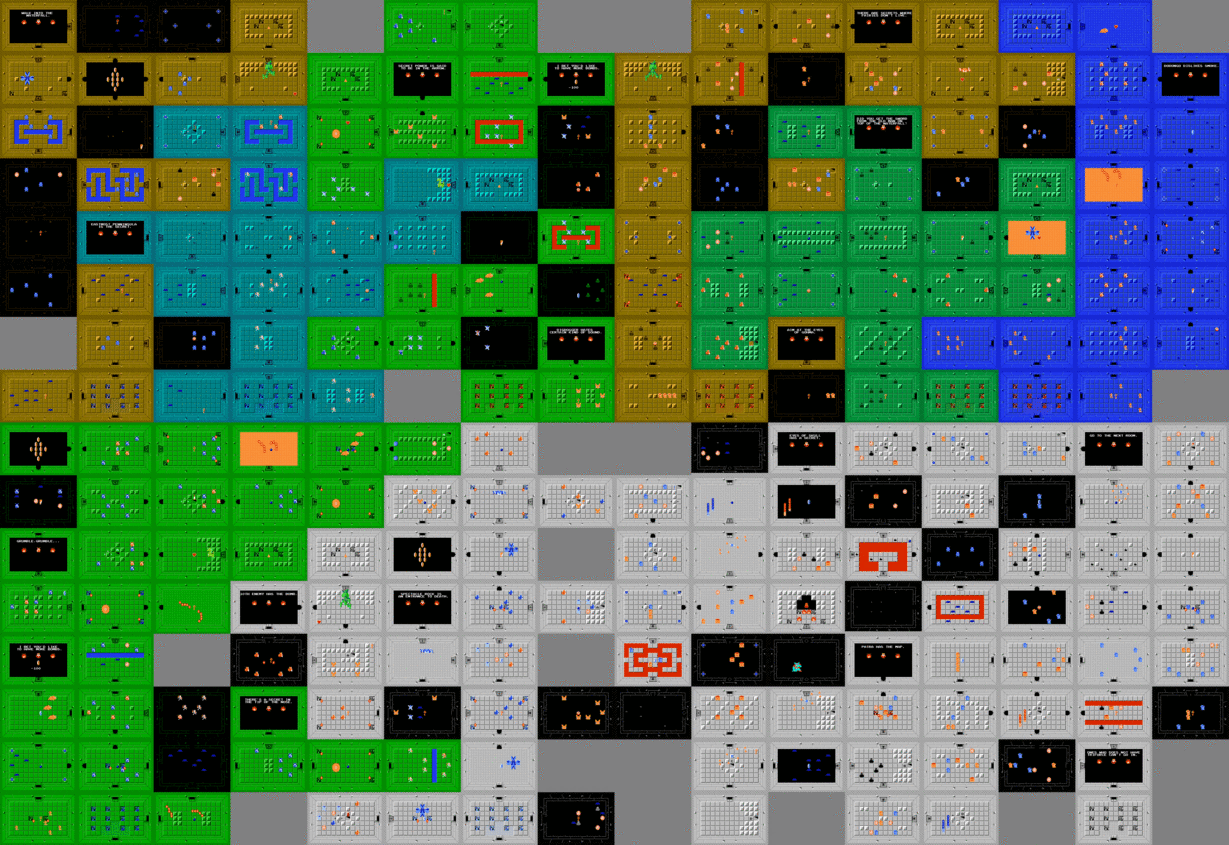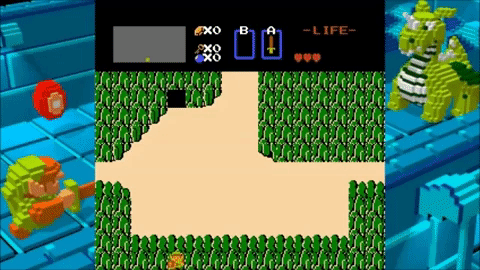Listen, everyone. It’s not every day that a new fact comes to light regarding a game that came out more than 30 years ago. And I happen to love it when retro games get broken in fabulous and entertaining ways. So the news that The Legend of Zelda for NES has a minus world like Super Mario Bros. and others hit me like a freight train.
The phenomenon was discovered by YouTuber SKELUX, who starts off his video with a quick explanation of how minus worlds work. If you think about an NES game as a big file, there are places where graphics are stored, sounds and music are described and, of course, level layouts and enemy logic are kept.
As a player, you are expected to navigate the structured parts of this file, namely the game world — level 1, 2, 3, this or that dungeon or town, etc. But there are ways to escape that structure by exploiting flaws in the game’s code, letting you run free in portions of the game’s data that aren’t meant to be “real” levels — yet the game’s engine will interpret the data as best it can, producing in some cases pretty wacky but still navigable levels. This type of thing gets its name from Super Mario Bros., where you could easily warp to a buggy level “-1” and progress from there.
Zelda and other games often use data trickery to get around the natural limitations of 8-bit computing and severely restricted storage space. For instance, did you know that in order to store them more efficiently, Zelda’s dungeons all fit together like giant tiles?
I just about lost my mind when I found out about that. Note that the above is two 16×8 grids set one on top of the other.
As SKELUX explains, the overhead map is similarly divided, except the bottom “half” isn’t actually filled with map data. And although there are cheats that let you walk through walls, the game’s code detects when you reach an invalid map coordinate and returns you to the starting location. But a little hackery takes that safety measure out of play and the result:
And a horribly buggy one, as it turns out right from the start. Octoroks are shooting boomerangs out of their snouts; the old man on one screen tells you it’s dangerous to go alone, then next door says “leave your life of money”; a Molblin caterpillar shoots fireballs at you; glitchy inverted witch women swarm the statues of Death mountain; and so on.
It’s a strange, hilarious world, and one that obviously was not crafted but is simply created on the fly by the game’s engine attempting to make sense of the data it’s reading. It isn’t canon.
This type of video game archaeology is endlessly fascinating to me, because it demonstrates both the fragility and the robustness of these venerable pieces of software — and, of course, the enduring love and interest they engender in fans. Another one that recently absorbed my attention was the explanation of parallel dimensions inside Super Mario 64 and how sliding between them lets you beat a level with only half a press of the jump button.
That’s all. Please return to your ordinary lives, which likely seem just a bit more ordinary now that you know one more magical secret of the Legend of Zelda.

